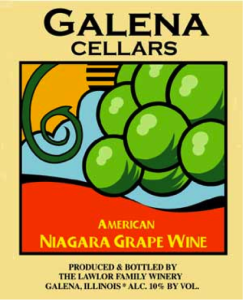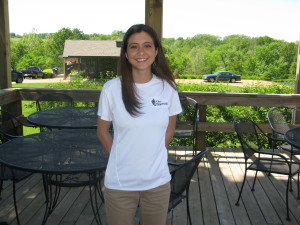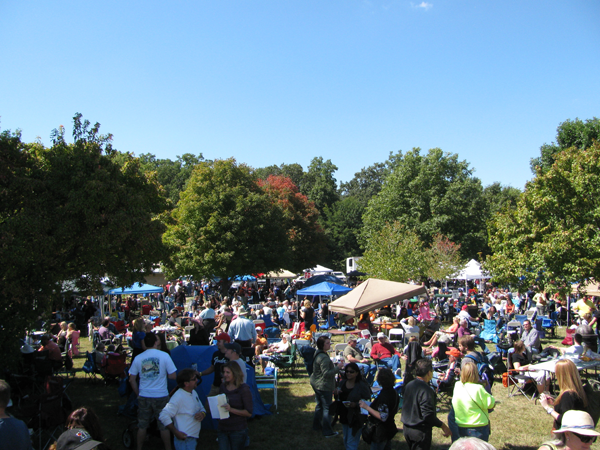What’s In A Wine Name, Anyway?
Midwest wine producers face a branding dilemma. Should they market their wine using the correct varietal name such as Marechal Foch, Seyval Blanc or other varietal names unknown to most consumers? Or use ‘brand names” like Shawnee Gold, Dawg House Red, or Ship of Fools? Just about any marketing department will emphatically respond that ‘branding” is the way to go. And, it may be in the short term; however, familiarizing our customers with the true grape names may be best in the long run.
Many Midwest wineries make a wide variety of wines from a variety of varietal and hybrid grapes. While just about every consumer knows that Chardonnay is a white wine, the vast majority of them don’t have a clue that Marquette isn’t only a city in the Upper Peninsula of Michigan. As Dr. Paolo Sabbatini of Michigan State University said at the Michigan Wine Conference in February, Marquette is ‘a great wine maker’s grape.” But does the wine drinker care about the grape name so long as the wine tastes good?
Brianna is a cold climate white grape variety created by the late Elmer Swenson, the Godfather of cold climate grapes. This grape’s tropical fruit flavors provide hints of pineapple and pear, well suited for the consumer who enjoys that flavor profile in their oaky California Chardonnay. Do they want to know what grape produced the wine they’re enjoying? The answer is a definitive yes, and, no!
Is it our job to educate our customers about the wines they’re enjoying? Justin Osborne, winemaker at Four Daughters Vineyard & Winery in Minnesota, says that it’s incumbent on producers to teach wine drinkers about the wines they like. As Justin puts it, ‘wineries using hybrid grapes really need to use the name of the grape on the label, without a doubt.” His perspective is that, by using the correct grape name on the label we’re ‘helping educate them (consumers) as part of our service.”
Many Midwest wine drinkers are very curious about what they’re drinking. They want to know what grapes are used to make the wine, where the grapes are sourced, if they are aged in oak or stainless steel, for how long, etc., you get the idea! Others don’t give a hoot about the juice in the bottle as long as it tastes good. They couldn’t care less if the wine is made from a blend of Niagara, Chardonel, Norton and Seyval Blanc! (How would that taste?!)


Julie Harvey of Alto Vineyards in Illinois believes that ‘winemaking is an art.” If the artist/winemaker wants to use names for their wines, why not? Artists name their paintings, don’t they?” Alto Vineyards markets their wines using both grape names and ‘brands” like Shawnee Gold and Porto di Guido. They found that sales of their Villard Blanc soared when they changed the name to Doghouse White. Same juice, different name, vastly different sales, go figure!
Chris Lawlor of Galena Cellars, also in Illinois, uses a variety of labels to market their wines. Some have a ‘brand” name only, some use the grape name and others display both the grape and a ‘brand” name. Their Niagara wine simply states ‘Niagara Grape Wine”.
The question of what to call the product in the bottle has no easy or simple answer. As the song goes, ‘different strokes for different folks.” While some wineries are purists in that they will only use the correct grape name(s), others will use whatever brand sells the most product. For consumers and producers alike, perhaps the best bet is a combination of the two schools of thought, a catchy name on the front label and naming the grapes on the back label. What do you think?
©2012 Wine Counselor LLC
Michael Schafer Esq., The Wine Counselor®, is a wine educator, speaker, Sommelier, C.S.W., writer and consultant who entertains while educating. His approach to wine is reflected in his trademark phrase, ‘I taste bad wine so you don’t have to”®
For more information see: www.winecounselor.net






I normally will not buy a Midwest wine if I don’t know what varietal(s) are in it. Knowing about the oak and sugar is a big help too. I like seeing it all on the label. I personally stay away from flashy labels, they seem to make me think it is going to be low quality syrupy wine. It seems really important to educate the local wine drinkers to Varietals names. I think we would all like to be able to walk past the “Marquette” section in the wine shop versus the “local” wine section which always is slightly quirky and confusing.
Marquette, Brianna, Seyval Blanc are all great names for Midwest grapes and just needs the time to get into the consumer’s mind.
Like the hundreds of years it has taken for Chardonnay or Pinot Grigio to stick.
I think the branding name that sells is great for blends that would also have the TTB marking of Table Wine on the label.
I agree with Michael on the branding and labeling of Midwest wines. Sometimes the consumers cannot even pronounce the wine names, like Noiret, and the winery will come up with some more easily understood name for the bottle of wine, but it should list somewhere on the label, or on the back, the names of the grape varieties used. About that blend of Niagara, Chardonell, Norton, and Seyval, I would have a fancy label with O.M.G.
I believe varietal identity is overrated. Think of Chianti, Burgundy, Bordeaux, Champagne; all famous for centuries from numerous wineries, specific grape varieties not stated.
Good points. A place name that represents Midwest wine would be ideal. The parts of Europe you mention have become synonymous with wine over centuries. How many people can name even one city in these European wine regions or find them on a map?
With all the new varietals being developed, planted and made into wine regional names could become a hindrance to Midwest wine. All the areas Dave mentions are able to make wines that area labeled by place because the varietals used in each area is defined. That is not to say that everyone knows what is in a bottle of Bordeaux or Chianti but the product is somewhat similar. There is a risk factor here in doing that. There are a lot of new wineries around doing a lot of learning and experimenting, both good things. So let us say we have a regional name that a couple 100 wineries use. A group of new consumers go to check out the wines at X winery and the sample a bottle of the new Midwest regionally named wine and the tasting is something they don’t find agreeable for any number of reasons. That could hinder that consumer and maybe more from buying or even trying a wine with that name again. It just seems to me that this is relatively new grounds here in the Midwest and with anything new it is good to get the fundamentals down first. I’m not against the idea of a regional name if there would be some consistency to the product so the consumer is not further confused. Although I don’t think I want some government entity telling me that I can only grow and vinify certain varietals though.
If you don’t have government oversite on it, then it has to be some organization that takes it on, but there has to be some oversite otherwise once something like this catches on, what’s to stop everyone from just piggy backing on it? The standard has no teeth to be enforced then. i.e. everyone now wants their wine to be able to be called champagne or tokay or chianti etc…. If anyone can sign off on it, then it dilutes the meaning of champagne. Who says they are even adhering to the same practices?
Some regions mandate that you work with certain grapes but don’t determine percentages or something like that. Something like this would be pretty easily enforceable and yet also tell the customer roughly what they’re getting. If we had a wine in Minnesota called XYZ and it had to include Marquette, Frontenac and St.Croix, this is pretty easily verifiable, can create a wine that many customers probably would like, and also tell the customer roughly what’s in the bottle if they buy a wine that’s labeled XYZ. They know it’s a 3 way blend of those 3 grapes at least.
Also, I think it has to be said that in France, Germany and other places in Europe for that matter, for centuries wines were never labeled by variety. They were almost solely labeled by region and even if you go to France today, many of them are still labeled in this manner. The concept of varietal labeling was for the most part a New World idea. Historically speaking, wine has been mostly terroir labeling.
Sure, the point is that the generally people knew what grapes were being grown locally because they have had decades to taste it.
Around here things change every year. I think there is a desire to educate the local customer. Naming a wine Minnesota Red doesn’t get that accomplished.
The wineries should be proud to label the wines by varietal. Popularity of a certain grape takes time and if you only give it a brand name it will take even longer for the grape to get noticed. I think that the only reason for a ‘whimsical’ label would be for a blend. That being said, the blend label should show the types of grapes and their percentage. Labeling should also include sweetness level (i.e. dry, semi-sweet, etc.) and year produced.
Good point, I tend to agree about putting varietal names on the label. The more information on the label the better for the consumer. However, did you know that each time a winery changes a wine label, they have to re-submit it for approval with the federal government? As a result, wineries like labels that can used more than once.
I think this is a big reason why wineries won’t do it. Label approval is a very nice experience with the government. If you have a blend, if you wish to put what grapes are in the wine, you also have to list percentages as well as appelation of origin for each grape. Now, you might say, well that’s doable. Ok, now do it 15-20 times and, next year you’ll have to do the same exact thing all over again because you’re very rarely going to be working with exactly the same wine blend next year and if it changes at all, the label has to change. Each year produces something slightly different and the blend should account for this. The labeling issue is a big part of why more wineries don’t do it.